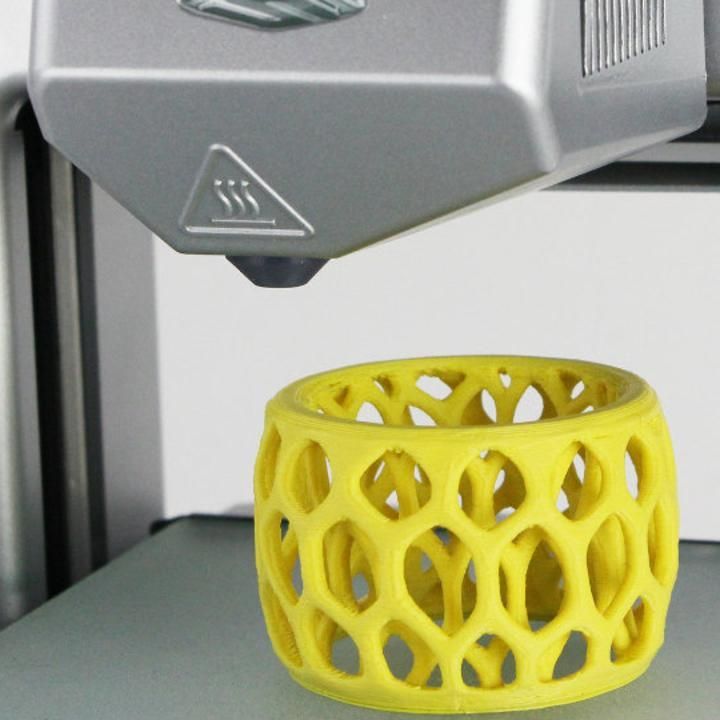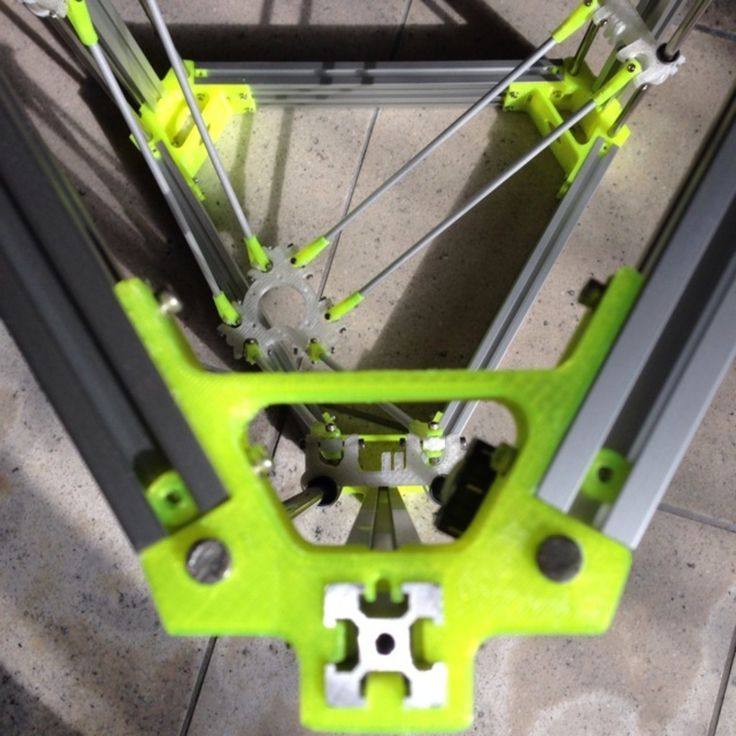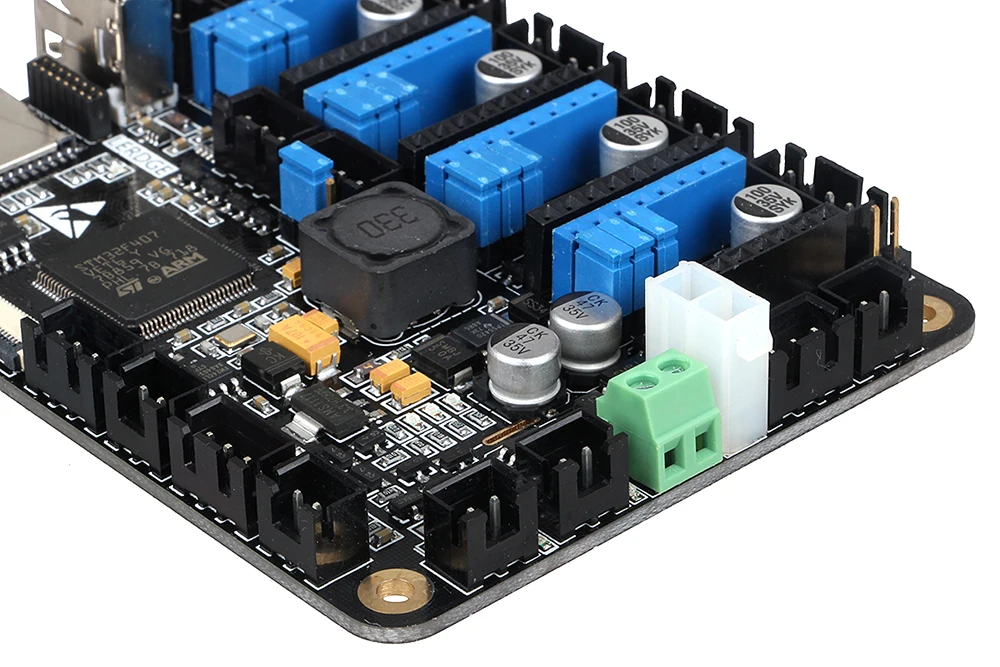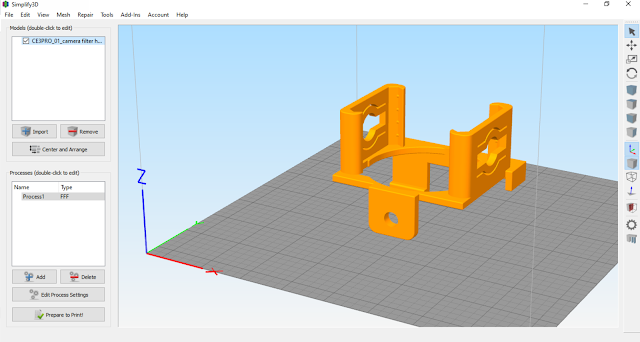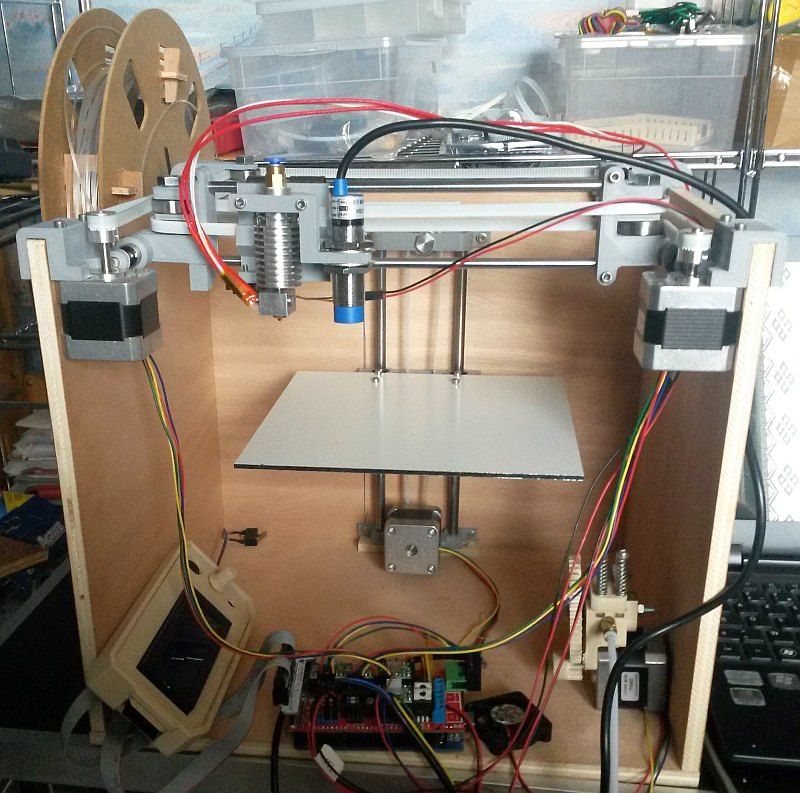3D printing ocular prosthesis
Fraunhofer Institute creates 3D-printed prosthetic eye
The Fraunhofer Institute for Computer Graphics Research IGD has used its propriety Cuttlefish:Eye software to 3D-print a prosthetic eye.
According to the company, scientists have managed to create models in a fraction of the time typically needed for fitting one. Fraunhofer's new technology will undergo clinical trials in the Moorfields Eye Hospital in London, where 40 patients will get 3D-printed prosthetic eyes.
The company noted that its process creates a 3D scan of the eye socket and a color-calibrated photo of the healthy eye to create the prosthetic eye's 3D model. Fraunhofer's Cuttlefish 3D printing driver is used to print the model on a multicolor, multimaterial 3D printer.
The process
Fraunhofer noted that the process is made possible by the algorithms of Cuttlefish:Eye, a software solution from the Fraunhofer Institute for Computer Graphics Research IGD.
Working in close collaboration with the British company Ocupeye Ltd, the research team in Darmstadt has developed a unique process to create a virtual model from a scan of the eye socket together with a photo of the healthy eye. This serves as a reliable digital platform for 3D printing. The breakthrough technology to produce prostheses will now be fitted in patients for the first time in a clinical trial to be held at Moorfields Eye Hospital London.
Related: 3D printing in ophthalmology
Mandeep Sagoo, MD, PhD, a consultant ophthalmologist at Moorfields, pointed out that the company is excited about the potential for the fully digital eye.
“This has been a culmination of 4 years of development of sophisticated technology between Moorfields Eye Hospital, UCL Institute of Ophthalmology, Ocupeye Ltd and Fraunhofer,” he said. “We hope the forthcoming clinical trial will provide us with robust evidence about the value of this new technology, showing what a difference it makes for patients. It clearly has the potential to reduce waiting lists."
A necessity
Ocular prostheses become necessary whenever an eye has had to be surgically removed for health reasons, such as a result of a serious injury or a life-threatening disease such as eye cancer, conditions that afflict more than 8 million people worldwide.
The method of individually measuring the eye socket and manufacturing the prostheses has remained largely unchanged for many decades. The invasive molding can be uncomfortable and in children a distressing experience that often requires a general anesthetic.
The process of handcrafting a prosthetic eye is time consuming and can result in a wait of several months, exacerbating what is already a stressful time for the patient. Utilizing leading-edge 3D printing technologies, the new process significantly speeds up production and provides patients with a quicker, better and an overall more comfortable experience.
The patient's 3D prothesis initial appointment begins with a 2.4 second, noninvasive, non-ionizing scan from a specially modified Optical Coherence Tomography ophthalmic scanner, which is manufactured by TOMEY Japan. The medical scanner is routinely used in a hospital environment.
Color-calibrated
The resultant scan of the eye socket and color-calibrated image of the healthy eye is seamlessly and digitally transferred to Fraunhofer IGD. Tomey has optimized its capability such that the socket of the removed eye is precisely measured and additionally a color-calibrated photo of the healthy eye is produced. Cuttlefish:Eye creates a 3D print model from this data in an equally short time.
Tomey has optimized its capability such that the socket of the removed eye is precisely measured and additionally a color-calibrated photo of the healthy eye is produced. Cuttlefish:Eye creates a 3D print model from this data in an equally short time.
The company noted the printers are controlled by the Cuttlefish universal 3D printer driver, which is characterized by its color consistency as well as realistic representation of even transparent materials. Fraunhofer IGD technology is used worldwide with many different types of printers. The 3D prostheses are printed by Lupburg based Fit AG which has many years of experience in additive manufacturing, especially in the field of medical technology. Once printed, the prostheses are inspected and given final polishing by a team of experienced ocularists. With a single 3D printer, Ocupeye can potentially fulfil the annual requirement of around 10,000 prostheses required for the UK market.
“Together with Fraunhofer, we have achieved the very first in human 3D printed prosthetic eye,” Gordon Bott, CEO of Ocupeye Ltd. , said in a statement. “There now exists a complete technology that truly has the potential to reimagine prosthetic eye patients' expectations.”
, said in a statement. “There now exists a complete technology that truly has the potential to reimagine prosthetic eye patients' expectations.”
Every step of the new manufacturing procedure has been subjected to strict quality controls. For example, the Cuttlefish:Eye software is certified as a Class 1 medical device. Extensive and exhaustive biocompatibility tests were performed on the 3D printing materials before the UK Medicines and Healthcare products Regulatory Agency -MHRA- provided a letter of approval for a clinical trial. The clinical trial will recruit around 40 patients to receive a 3D-printed ocular prosthesis; they will be examined several times by qualified clinical staff over the course of a year and be asked to report back on their experiences.
That is an important step that is bringing the project partners closer to fulfilling their vision. Namely to have the ability to routinely provide a realistic medical product to patients who require a prosthetic eye. This is made possible by a highly "disruptive" innovative process that begins with an optical coherence tomography medical device, manufactured by Tomey Japan and with their European HQ in Nürnberg. From the learnings already gained during the research and development phase, Tomey has adopted the enhanced functionality as standard and applied the enhancements to their next-generation devices.
From the learnings already gained during the research and development phase, Tomey has adopted the enhanced functionality as standard and applied the enhancements to their next-generation devices.
Potentially with just one device per clinic and the deployment of a small number of geographically deployed 3D printers, the estimated global market demand for eight million people, approximately 0.1 percent of the world's population, could be met.
London man receives “world’s first” 3D printed prosthetic eye
0Shares
A London man has reportedly become the first person in the world to be fitted with a 3D printed prosthetic eye.
Steve Verze received the eye today at Moorfields Eye Hospital in Finsbury, London, which provides a more realistic look than a traditional acrylic prosthetic eye and can be manufactured in a much shorter time frame.
Professor Mandeep Sagoo, Consultant Ophthalmologist at Moorfields Eye Hospital, hopes the forthcoming clinical trial of the 3D printed prosthetic eye will provide the team with “robust evidence” of the value of the technology, and says it has the potential to reduce waiting lists.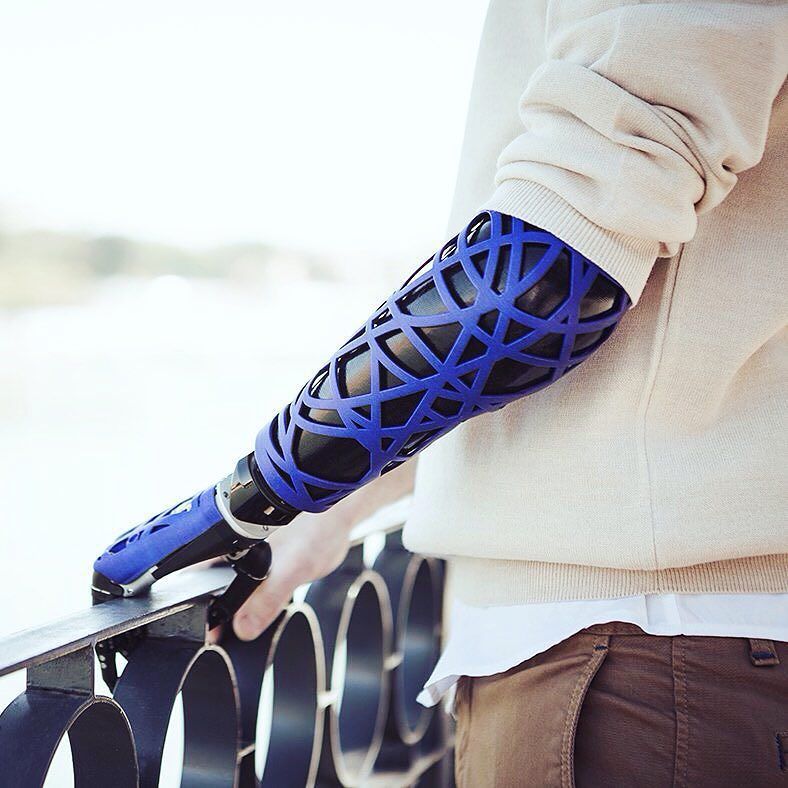
Optical 3D printing
Moorfields Eye Hospital is claiming the delivery of the 3D printed prosthetic eye as a world first, and while this does appear to be the case there has been some previous research in the area of optical prosthetics and grafts.
Design agency Fripp Design has been developing 3D printed artificial eyes for a number of years in partnership with Manchester Metropolitan University and the University of Sheffield. In the past, the company has claimed to be able to produce over 120 eyes in an hour with its patented process.
However, last year owner Steve Roberts announced his intention to sell the company’s 3D printing silicone IP in order to pursue other ambitions. Whether the development of the 3D printed eye prosthetics continues remains to be seen.
In 2018, the Severance Hospital of the Yonsei University Health System (YUHS) announced plans to commercialize its first 3D printed artificial eye, as part of a research project sponsored by the Korean Ministry of Science and ICT. The prototypes were slated to be ready by 2020, however the hospital has not yet provided an update on their progress.
The prototypes were slated to be ready by 2020, however the hospital has not yet provided an update on their progress.
Elsewhere, 3D printing has previously been deployed to help reconstruct the eye of a 47-year-old woman. The woman’s face was captured using 3D scanning and CAD modeling techniques to give a customized eye model which was then 3D printed via SLA to form a mold to make the artificial eye.
While fully 3D printed eye prosthetics may be a first for humans, man’s best friend has already benefited from the technology. Last year, researchers from Chungbuk National University developed low-cost personalized artificial eyes for canines that had lost theirs to incurable diseases. The 3D printed prosthetics were successfully tested on two beagles and considered to have “great potential” in veterinary applications.
The researchers’ 3D printed dog eyes proved to be cheaper and more effective than their conventional counterparts. Photo via the Plos One journal.The 3D printed prosthetic eye
Today appears to mark the first time a 3D printed prosthetic eye has been cleared for human use as part of a clinical trial.
Currently, being fitted with a traditional acrylic artificial eye is a long and drawn-out process, with patients having to undergo a two-hour session to mold their eye socket, before the prothesis is fitted and then painted. In total, the process can take around six weeks.
According to Moorfields, 3D printing offers a much faster alternative, reducing the manufacturing process to just two to three weeks. The initial appointment to measure the eye socket is also shortened to just half an hour.
Ocupeye and Fraunhofer IGD lent their software expertise to the project, which is supported by the National Institute for Health Research, the Moorfields Biomedical Research Centre, and Moorfields Eye Charity. Once Verze’s eye socket had been scanned and the data modeled, the customized eye prosthetic was printed by German 3D printing service bureau FIT AG.
To complete the scanning process, Fraunhofer IGD deployed its Cuttlefish:Eye software to take a 3D scan of the eye socket and a color-calibrated photo of the healthy eye to create a 3D model of the prosthetic. The Cuttlefish 3D printing driver was then used to print the model on a multicolor, multi-material 3D printer.
The Cuttlefish 3D printing driver was then used to print the model on a multicolor, multi-material 3D printer.
“We are excited about the potential for this fully digital eye,” said Sagoo. “This has been a culmination of four years of development of sophisticated technology between Moorfields Eye Hospital, UCL Institute of Ophthalmology, Ocupeye and Fraunhofer.
“We hope the forthcoming clinical trial will provide us with robust evidence about the value of this new technology, showing what a difference it makes for patients. It clearly has the potential to reduce waiting lists.”
The hospital also believes the 3D printed prosthetic eye is more realistic looking than a traditional acrylic one, due to the way light is able to travel through the full depth of the printed eye. This sentiment is echoed by Verze, who has always “felt self-conscious” about his artificial prosthetic.
“This new eye looks fantastic and, being based on 3D digital printing technology, it’s only going to be better and better,” he said.
Sagoo and his team at Moorfields Eye Hospital are optimistic about the forthcoming clinical trial, and believe the technology has the potential to significantly reduce waiting lists for patients needing eye prosthetics. With a single 3D printer, the partners believe they could be capable of fulfilling the annual requirement of around 10,000 prostheses required for the UK market.
Subscribe to the 3D Printing Industry newsletter for the latest news in additive manufacturing. You can also stay connected by following us on Twitter and liking us on Facebook.
Looking for a career in additive manufacturing? Visit 3D Printing Jobs for a selection of roles in the industry.
Subscribe to our YouTube channel for the latest 3D printing video shorts, reviews and webinar replays.
Featured image shows Steve Verze has received the first 3D printed eye prosthetic. Photo via Moorfields Eye Hospital.
Photo via Moorfields Eye Hospital.
Tags Chungbuk National University FIT AG fraunhofer fripp design Manchester Metropolitan University Moorfields Biomedical Research Centre Moorfields Eye Charity Moorfields Eye Hospital National Institute for Health Research Occupeye Professor Mandeep Sagoo South Korean Ministry of Science Steve Roberts Steve Verze University of Sheffield Yonsei University Health System
Hayley Everett
Hayley is a Technology Journalist for 3DPI and has a background in B2B publications spanning manufacturing, tools and cycling. Writing news and features, she holds a keen interest in emerging technologies which are impacting the world we live in.
British patient receives 3D printed prosthetic eye
News
Doctors at the Moorfield Eye Hospital say this is the first time a prosthetic procedure using a 3D-printed artificial eye has been performed in medical practice.
“I have needed a prosthesis since I was 20 and have always felt uncomfortable about it. When I leave the house, I often look in the mirror and I don't like what I see. The new eye looks amazing, and because it is made using digital 3D printing technologies, such prostheses will be even better in the future, ”says 40-year-old engineer and patient Steven Verze.
When I leave the house, I often look in the mirror and I don't like what I see. The new eye looks amazing, and because it is made using digital 3D printing technologies, such prostheses will be even better in the future, ”says 40-year-old engineer and patient Steven Verze.
Although doctors call the new prosthesis "biomimetic", this term can only be used with a stretch, as it is not a fully functional, but only a cosmetic product. But this is also important, as the new version more accurately conveys the appearance, and the manufacturing procedure itself is more efficient and can help reduce waiting times.
The new process eliminates the frustrating and time-consuming procedure of creating an eye-socket impression. Prosthetics for children traditionally cause particular problems, when young patients often require local anesthesia at the modeling stage. The new, non-invasive approach involves 3D scanning both the empty eye socket and the whole eye, followed by the generation of a digital 3D model, and then 3D printing of a custom prosthesis.
What kind of technology was used in the additive manufacturing of the prosthesis, the press service of the center does not indicate, however, it clarifies that, unlike traditional acrylic analogues, manual processing was not required. The prosthesis is printed in an almost finished form, accurately conveying the pattern and color of the iris, but after manufacturing, mechanical surface treatment, including polishing, is required. In addition, the material is slightly translucent to more closely mimic the look of a real eye. Most likely, the prosthesis was made using inkjet photopolymer 3D printing - PolyJet from Stratasys, MultiJet from 3D Systems, or some similar technology.
The whole process from 3D scanning to fitting the finished prosthesis takes a couple of weeks, 3D printing itself takes two and a half hours. It was manufactured by an unnamed German company, so this includes shipping time. Even at this rate, there is a significant time saving compared to the traditional method, which takes about six weeks without taking into account the waiting time in line.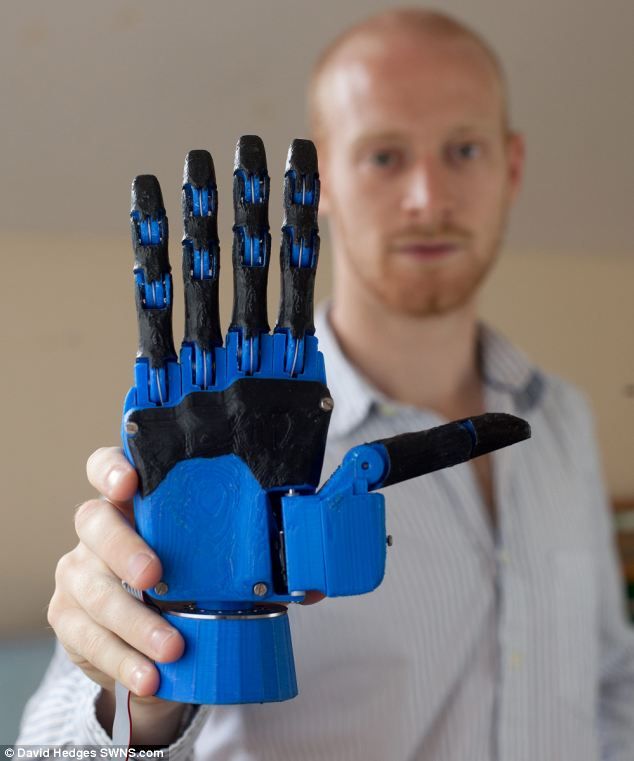 The ability to accurately fit the patient without invasive procedures and a more realistic appearance are other obvious pluses.
The ability to accurately fit the patient without invasive procedures and a more realistic appearance are other obvious pluses.
“We are intrigued by the potential of these digital eye prostheses and hope that the upcoming clinical trials will confirm the value of the new technology and demonstrate the benefits for patients. Obviously, this technology can help to reduce the waiting time in the queue for prosthetics, ”commented the head of the study, professor of ophthalmology and ocular oncology Mandeep Sagu.
Do you have interesting news? Share your developments with us, and we will tell the whole world about them! We are waiting for your ideas at [email protected].
prosthesis the medicine eye
Subscribe to the author
Subscribe
Don't want
3
Even more interesting articles
6
Subscribe to the author
Subscribe
Don't want
A new method called iCLIP created with the participation of Professor DeSimon - co-founder and CEO . ..
..
Read more
5
Subscribe to the author
Subscribe
Don't want
Researchers from Peter the Great St. Petersburg Polytechnic University have developed an algorithm...
Read more
56
Subscribe to the author
Subscribe
Don't want
Dear friends!
3D printers, makers and just caring people in Russia connect...
Read more
The Fraunhofer Institute has created a 3D printed prosthetic eye
The Fraunhofer Institute for Computer Graphics IGD used its own software Cuttlefish:Eye to 3D print an eye prosthesis.
According to the company, scientists were able to create models in a fraction of the time it normally takes to install a prosthesis. Fraunhofer's new technology will undergo clinical trials at London's Moorfields Eye Hospital, where 40 patients will receive 3D printed prosthetic eyes.
Fraunhofer's new technology will undergo clinical trials at London's Moorfields Eye Hospital, where 40 patients will receive 3D printed prosthetic eyes.
The company noted that a 3D scan of the orbit and a color-calibrated photograph of a healthy eye are used to create a 3D model of a prosthetic eye. Fraunhofer's Cuttlefish 3D Print Driver is used to print the model on a multi-color, multi-material 3D printer.
Steve Verze became the world's first patient to receive a fully digital 3D printed prosthetic eye on November 25 at London's Moorfields Eye Hospital. (Image courtesy of Moorfields Eye Hospital NHS Foundation Trust)
Process
Fraunhofer noted that the process was made possible by the Cuttlefish:Eye algorithms, a software solution from the Fraunhofer Institute for Computer Graphics Research IGD.
Working closely with the British company Ocupeye Ltd, the research team in Darmstadt has developed a unique process for creating a virtual model based on an eye scan along with a photograph of a healthy eye. This serves as a robust digital platform for 3D printing. The breakthrough prosthesis technology will now be installed on patients for the first time in clinical trials at London's Moorfields Eye Hospital.
This serves as a robust digital platform for 3D printing. The breakthrough prosthesis technology will now be installed on patients for the first time in clinical trials at London's Moorfields Eye Hospital.
Related content: 3D printing in ophthalmology
Mandeep Sagu, MD, PhD, Consultant Ophthalmologist at Moorfields, said the company is excited about the potential of a fully digital eye.
"This is the culmination of four years of sophisticated technology development between Moorfields Eye Hospital, UCL Institute of Ophthalmology, Ocupeye Ltd and Fraunhofer," he said. "We hope that the upcoming clinical trial will provide us with solid evidence of the value of this new technology and show what difference it brings to patients. It clearly has the potential to shorten waiting lists."
Necessity
Prosthetic eyes become necessary when the eye has to be surgically removed for medical reasons, such as a serious injury or a life-threatening disease such as eye cancer, which affects more than 8 million people worldwide .
The method of individual measurement of the eye socket and the manufacture of prostheses has remained virtually unchanged for many decades. Invasive shaping can be an uncomfortable and, for children, agonizing procedure that often requires general anesthesia.
The process of making an ocular prosthesis by hand is time-consuming and can take several months, adding to an already stressful time for the patient. Using cutting-edge 3D printing technology, the new process greatly speeds up production and provides patients with a faster, better, and overall more comfortable experience.
The initial patient encounter with the 3D prosthesis begins with a 2.4 second non-invasive, non-ionizing scan using a specially modified Optical Coherence Tomography ophthalmic scanner manufactured by the Japanese company TOMEY. This medical scanner is regularly used in hospital environments.
Color calibration
The result of the orbital scan and the color-calibrated image of the healthy eye are freely and digitally transferred to the Fraunhofer HDD. Tomey has optimized its capabilities to accurately measure the eye socket of the removed eye and additionally obtain a color-calibrated photo of the healthy eye. Cuttlefish:Eye creates a 3D print model from this data in an equally short time.
Tomey has optimized its capabilities to accurately measure the eye socket of the removed eye and additionally obtain a color-calibrated photo of the healthy eye. Cuttlefish:Eye creates a 3D print model from this data in an equally short time.
The company noted that the printers are controlled by the Cuttlefish Universal 3D Printer Driver, which features color consistency as well as realistic display even of transparent materials. Fraunhofer IGD technology is used worldwide with various types of printers. The 3D prostheses are printed by Lüpburg-based Fit AG, which has many years of experience in additive manufacturing, especially in medical technology. After printing, the prostheses are checked and final polished by a team of experienced ophthalmologists. With a single 3D printer, Ocupeye could potentially meet the annual need for around 10,000 prostheses required for the UK market.
"Together with Fraunhofer, we have created the first human 3D printed prosthetic eye," Gordon Bott, CEO of Ocupeye Ltd.


